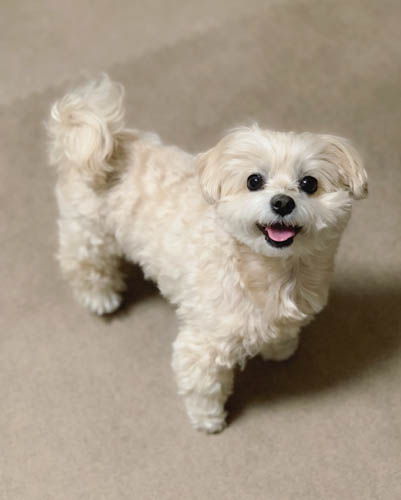Dogs, for the longest, are known for their lifetime companionship in ways no other being on this planet would come even close in terms of their faithfulness and loyalty to their human counterparts.
It will only be legit if they are placed second to family.
But raising a dog is in no way less than raising a toddler, wherein you have to make them learn to inhabit the ways of human civilization so they can be at ease with the kind of life around them.
Fact Because dogs are perceived as creatures having remarkable memory and olfactory senses, it becomes more important to mold them into learning ways of living humanly.
Unlike any other living being, they respond to the external stimuli projected towards them. Various scientific studies validate their exceptional behavioral patterns, making them perfect human communication candidates.
Human Dog Coexistence

Since time immemorial, dogs have lived within human confinements as one entity.
Dogs have sophisticated forms of social cognition and communication skills, allowing them to adapt to human surroundings successfully.
Dogs perform multifaceted roles for their human friends, assisting police forces for search operations, given their significant sense of smell and companionship, making them invaluable as man’s best friend.
The more contemporary style of living has the concept of including them as family members, and it has dramatically revolutionized how families are shaping up communities.
Means of Communication
We have often heard a common saying that if a dog is waiving its tail on you, it means he likes you being around, and somehow he has permitted you to enter his territory.
Dogs are known to showcase amazing communication skills to relay and receive information from other dogs and nearby humans in their immediate vicinity.
They do it by reading facial expressions, body postures, voice orientations, and memory of body scent/pheromones giving away the individual’s identity standing next to him.
On the other hand, humans communicate using hand signals, body postures, and voice modulations.
Understanding Socialism

Dogs are special because of their sensitivity and familiarity to understand human emotions unique to the animal kingdom where other animals’ prime objective of living is to reproduce and carry out basic means of survival; dogs take it one notch above and make it about more than just living.
Currently, there are two schools of thought divided over the socialism of dogs.
At the same time, one is focused on dogs displaying the socialized pack behavior and the other being the dominant tendencies making them difficult to live in groups.
Learning ways of social behavior in human societies becomes much easier for dogs in their early life spans. They are yet to imprint their rogue means of living with other animals.
The preferable age for learning is between 5 to 12 weeks. Even after 12 weeks, they can be used to living with their newfound human friends.
But it will require more training and patience because your canine fellow is used to a certain way of living, and it would only be a matter of time before he unlearns and adapt to the present scenario.
A well-socialized dog will eventually have a much complacent reaction when meeting new people and other dogs and thus will interact with a calm, friendly demeanor.
A quick guide to Dog Social Training
The earlier, the better

As mentioned earlier, smaller puppies are more open and receptive to acquiring new behaviors.
Once they have surpassed a certain age, they become more aware of their surroundings and turn more apprehensive of new people and things as a defense mechanism to shield themselves from uncalled danger.
Go out for walks
Taking your dog for morning/evening walks daily exposes them to new people and surroundings.
The more it becomes a routine, the greater are the chances of your canine friend picking on new scents and behaving in a calm, composed manner when it comes to passing by other fellow animals on the streets, including humans.
Dog classes
If there is another dog in the neighborhood ready to pick up a fight or your dog is giving out threatening warning signs, as with many aggressive dog breeds, it might lead to a dangerous situation.

It is often correlated that dogs who’ve led isolated growing-up years fail to pick up on social skills and therefore misread the incoming communication as a fear-based provocative response.
Thankfully, ‘dog classes’ come to the rescue for their trainers.
These classes are designed in a way where dogs are placed with other dogs to teach them positive things, and such association will be rewarded.
More than anything, patience is the key. You will have to make your friend trust your instincts and likewise.
Positive Reinforcement
There is a very famous experiment by Pavlov, a psychologist who presented the concept of classical conditioning in dogs.
This concludes that learning is reflexive in that a particular stimulus is responsible for generating a specific response.
Any form of behavior that is rewarded leads to conditioned learning.
So when the dogs are made to believe that good behavior in the presence of other dogs will be rewarded, they tend to do it more often.
This is one effective way of dealing with aggression where the dog learns that the presence of another dog leads to food treat the same way Pavlov made his dog learn to associate the sound of a bell with dinner.

Following cues
The more time you spend with your dog, the better you will be at judging his behaviors. It is, therefore, an important task to be observant of his body language and response patterns.
Every dog is unique in bonding with its owner and other family members. It becomes the owner’s duty to make them learn new things and be receptive to his actions because communication is a two-way road right.
Exercise
Some breeds require a minimum amount of physical activity, and too much lethargy can harm their health.
Likewise, those saving on energy, docile, and extraneous exercise routines might hamper their bodily functions.
Age and breed are factors to be deciding how much longer the exercise routines need to be.
But a healthy, playful practice will make your dog last longer with better mental health, thus easing in his temperament to look at nearby surroundings with more comfort, all owning up for better social skills.
Thoughts to Ponder

It is indeed a great feeling owning a dog that turns out to be a quick learner and perfectly fits your life. Somewhere down the line, we are all craving a long-lasting, meaningful companionship.
But dogs, at times like any other family member, the gone rogue could be a little demanding and requires you to have patience.
How well your dog feels welcomed and accepted in your homely surroundings also has a lot to do with the kind of breed and hospitality he is receiving.
How to deal with an aggressive dog
Despite following the standard textbook measures in training your dog to be more social, you find it extremely difficult, making him unlearn his previous ways of living.
All your attempts seem futile, and you are considering going firm will miraculously change things.
Slow down right there and don’t take the high road.

While desperate times call for measures, that is not how one should be enacted, especially when teaching discipline with your aggressive dog, who is having a hard time adjusting to your mannerisms.
Go easy on retribution.
Punishment sometimes intensifies the problem by backfiring what you intended in the first place.
While teaching your dog to be apprehensive of your scolding every time there is a new dog in the surroundings might save you the embarrassment temporarily, that is not going to stop him the next time from doing it.
On the contrary, it will result in negative effects causing your dog undue psychological stress.
Also, with continuous punishments, the dog might learn to suppress his discomfort making his behavior unpredictable when presented with the same situation.
Learning is a gradual process.
It is very important to understand that learning won’t happen overnight.
Being a dog owner brings a certain set of responsibilities, and ensuring the safety of those around, including your dog, is one of them.
It would only be fair if we kept our expectations realistic and gave them the time and space to learn things the right way.





